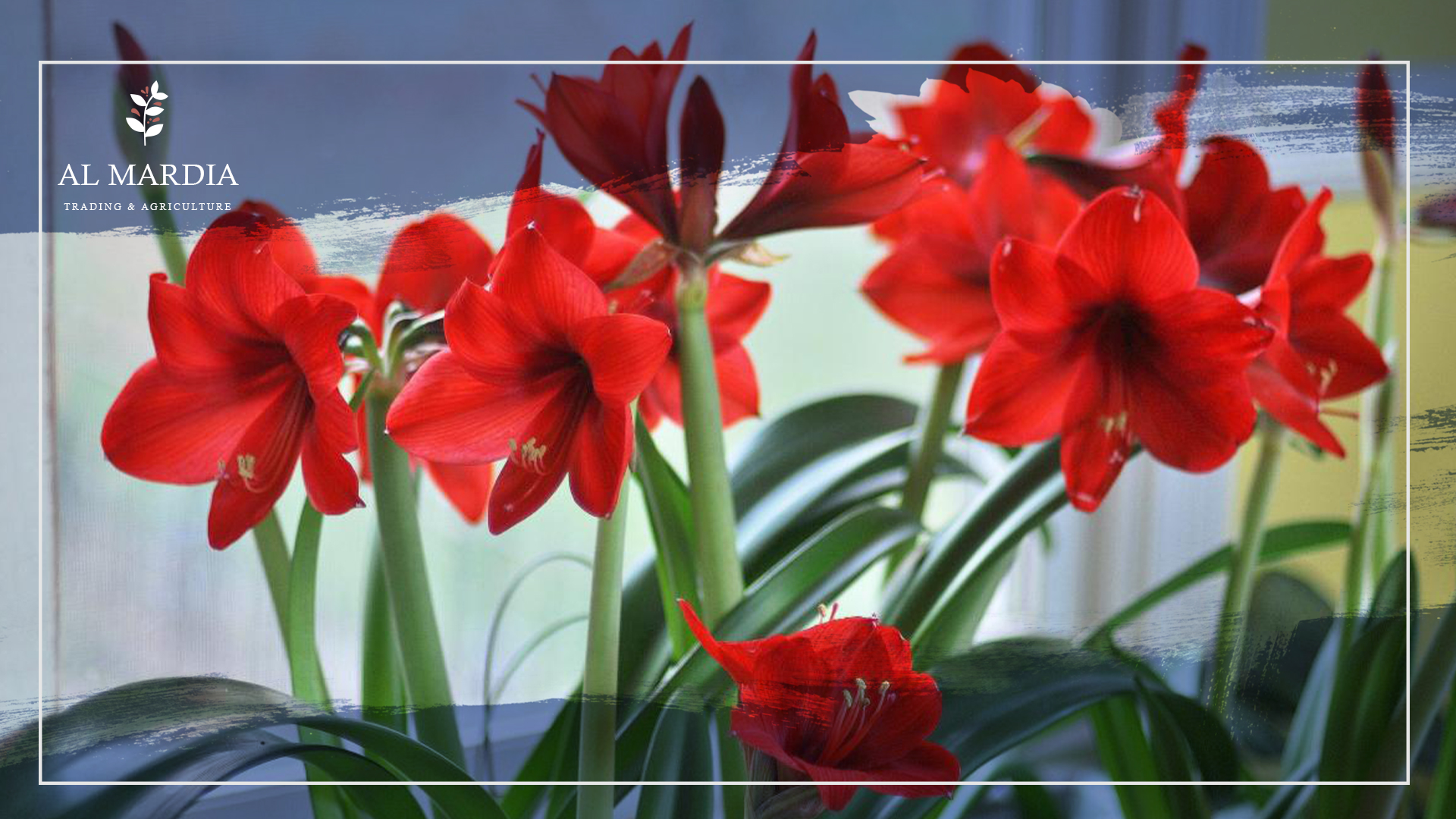
Caring for Amaryllis Flowers
Amaryllis, a popular winter flower native to South Africa, is a holiday favorite due to its beautiful clusters of fragrant blossoms, which often bloom just in time for the holidays. In this article, we provide an essential guide to caring for amaryllis flowers, with several tips and products to apply.
With its vibrant colors and delightful scent, Amaryllis is an ideal addition to holiday decorations and festivities. It is known to be a straightforward plant to grow and maintain. Its bare bulbs can be planted in such a way that its flowers bloom as perfect end-of-year gifts or create a cheerful atmosphere during the gloomy days of winter.
What is an Amaryllis?
Amaryllis is a beautiful flowering plant with large, vibrant blooms. It is one of the most popular plants for indoor gardens and can be grown in many different climates. Not only is it easy to care for, but it also provides a stunning display of color and texture that can last throughout the year. Whether you are looking to add some color to your home or just want something that will bring life into your garden, amaryllis is an excellent choice.
Origin of Amaryllis:
The Amaryllis or Belladonna Lily (Amaryllis spp.) that is native to South Africa is genuine, whereas the plant often referred to as ‘amaryllis’ originates from South America and is generally a combination of multiple species in the Hippeastrum genus. Nevertheless, both belong to the same family – Amaryllidaceae.
The Hippeastrum genus is generally found in tropical and subtropical regions of Eastern Brazil and the central-southern Andes. It can also be seen in countries inside this region such as Peru, Bolivia, and Argentina. Interestingly enough, some species have even been observed in Mexico and the Caribbean islands.
Guidelines for Caring for an Amaryllis Plant:
During spring and summer:
- If your Amaryllis plant has only sprouted but not yet bloomed, it is important to place it in a location that is warm and well-lit. Additionally, water the potting mixture only when it has completely dried out to a minimum depth of one inch or more.
- Store the plants in a place with cool temperatures. Additionally, when flowering buds open, it is advisable to move the amaryllis away from direct sunlight for prolonged bloom time, so the flowers can be enjoyed for weeks.
- After the flowers have wilted, it is important to trim off the dying blooms and leave the stems. This will ensure that the plant continues to receive the necessary nutrients for flowering in the future. The post-bloom growth is indispensable for a bountiful harvest next year.
- As the stalks begin to yellow and dry out, they should be trimmed to the bulb. Their container should then be placed in a cool, dark area. During this period of dormancy, no water or fertilizer should be used. In 8-10 weeks, new sprouts will start showing from the bulbs again.
- When the seedlings sprout, it is essential to place them in a warm and sunny area. Be sure to continue watering the pot and fertilize it with an organic phosphorus-based houseplant fertilizer such as Growthmax for better growth results.
- When the outdoor temperatures consistently rise above 50°F, it is safe to transfer potted bulbs outside. It is important to introduce plants to their new environment gradually, in order to ensure a successful transition.
During Fall and Winter:
- As soon as the summer season is over, the same steps are repeated – trimming off the flowers, allowing the stems to dry out and shrink. The bulbs should then be pushed into dormancy until it’s time to start again.
- To allow the potted bulb to rest, it is recommended to store it in a horizontal position in a cool and dark area like a closet or basement for 8-10 weeks.
- The ideal time to plant flower bulbs is during the late summer and early fall dormant period for optimal results. It takes anywhere from four to eight weeks for the flowers to appear once the stalks emerge from the bulbs, depending on the environmental conditions you provide.
- If you wish to have blossoms during the holidays, it is advisable to encourage bulbs to end their dormant period around Halloween. Keeping them dormant until late December will result in flowering in February.
Problems and diseases:
- It is advisable to be proactive when it comes to outdoor plants and keep an eye out for spider mites and mealybugs. Horticultural oil is the best way to control these pests, while slugs and snails may feed on them.
- Amaryllis can be afflicted by red blotch and mosaic viruses. This can produce red spots or blotches on the leaves, bulb, and scape. Furthermore, it has the capacity to quickly spread from one bulb to another. Plants affected with the mosaic virus experience reduced growth and flowering. The leaves begin to display yellow streaks, which indicates the presence of the virus.
Unfortunately, there is no cure for this viral disease or any other similar disease, so proactive measures must be taken to prevent problems before they occur. It is preferable to use natural pesticides such as Neem Protect Oil, to which pests do not build resistance.
Related topic
Neem Oil: Magic In a Bottle
Common Questions:
-
What do you do with amaryllis bulbs after they bloom?
After the flowers of your amaryllis have wilted, take care to snip off the stalks without interfering with the foliage. Keep the bulb in its original pot and make sure to give it adequate water and enough light. Once all threat of frost has passed, you can finally move it outdoors.
-
How do I keep my amaryllis blooming?
It is important to maintain a balance between moisture and dryness in the soil. Water only when the top two inches of soil feel dry. As soon as petals on buds start changing color, shift the plant away from direct sunlight into a cooler area. This will help preserve the flowers for a longer duration.
-
How many times will an amaryllis bloom?
Generally, the plant flowers once annually and the display can last up to several weeks as there are multiple flower stalks that bloom in succession. Furthermore, bigger bulbs produce better blooms.





